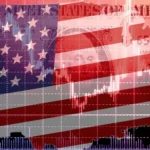Key Points
- The Fed is expected to cut rates next week amid persistent inflation concerns. November’s CPI rose 2.7% annually, with core inflation steady at 3.3%.
- Experts predict fewer rate cuts in 2025 due to inflation’s stickiness.
- Fed policymakers analyze CPI, PPI, and PCE data before final decisions.
- Labor market stability and declining inflation offer long-term optimism.
The Federal Reserve appears on track to implement another interest rate cut next week following an inflation reading that aligned with Wall Street expectations. However, due to persistent pricing pressures, experts suggest a more cautious approach to 2025.
Former Cleveland Fed President Loretta Mester anticipates a rate reduction in December but believes the Fed will likely slow its pace of cuts in the upcoming year. While initial forecasts predicted up to four rate cuts in 2025, Mester now sees two or three as more probable, reflecting inflation’s resistance to decline.
EY Chief Economist Greg Daco echoed this cautious sentiment, suggesting markets are highly confident about a 25 basis point reduction next week. However, given inflation’s stickiness, the decision is less certain. Daco expects a pause before subsequent cuts in 2025 as policymakers navigate the economic impact of the incoming Trump administration’s policies, which could place upward pressure on inflation.
November’s Consumer Price Index (CPI) data revealed a 2.7% annual increase, slightly higher than October’s 2.6% rise, which aligns with economist predictions. Core inflation, excluding volatile food and energy prices, remained at 3.3% for the fourth consecutive month, signaling persistent challenges in meeting the Fed’s 2% target. Traders responded to the CPI release by increasing their bets on a December cut, with odds reaching 96%.
Fed Chair Jay Powell recently highlighted the economy’s unexpected strength, emphasizing a cautious approach heading into the final policy meeting of 2024. The Federal Reserve will also analyze the Producer Price Index (PPI) and the core Personal Consumption Expenditures (PCE) index before deciding.
Despite the inflationary pressures, Richmond Fed President Tom Barkin expressed optimism about inflation trends improving in 2025. Meanwhile, Chicago Fed President Austan Goolsbee noted that the labor market remains stable, describing it as “sustainable full employment.” Goolsbee emphasized the substantial progress in reducing inflation since its 2022 peak of 9%, reaffirming confidence in achieving the 2% target over time.












